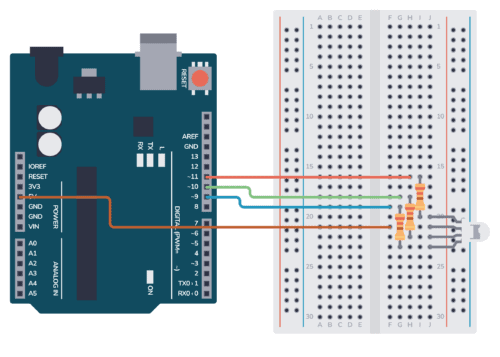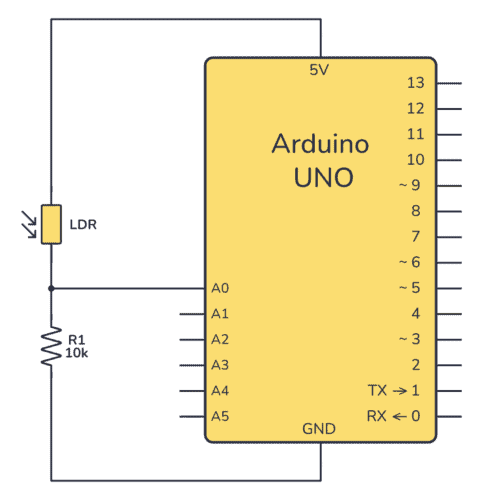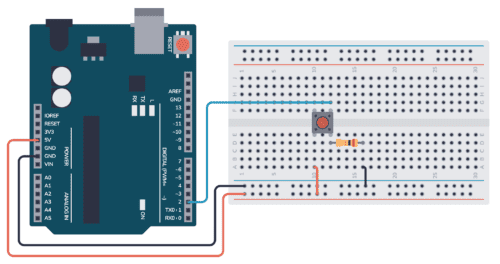In this guide, you’ll learn how to control an RGB LED using the Arduino. An RGB (Red-Green-Blue) LED can produce a wide variety of colors by mixing different intensities of red, green, and blue light. You’ll learn to create a basic Arduino RGB LED circuit and cycle through some basic colors as an example.
Using the provided schematic and breadboard images, as well as the example code below, you should have everything you need to easily set up and control an RGB LED’s color output on your own.
Parts Needed
- Arduino Uno
- Breadboard (and some breadboard wires)
- 3 x Resistor (220 Ω)
- RGB LED
There are two types of RGB LEDs: Common Anode and Common Cathode. We’ll provide example schematics and code for both types below.




